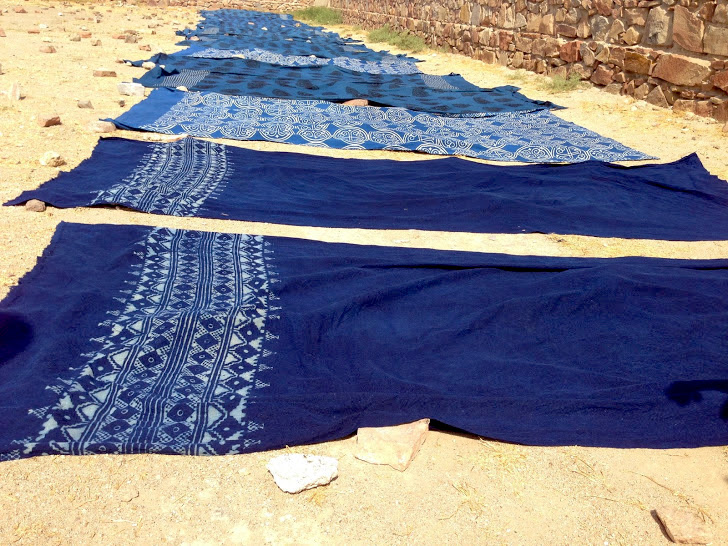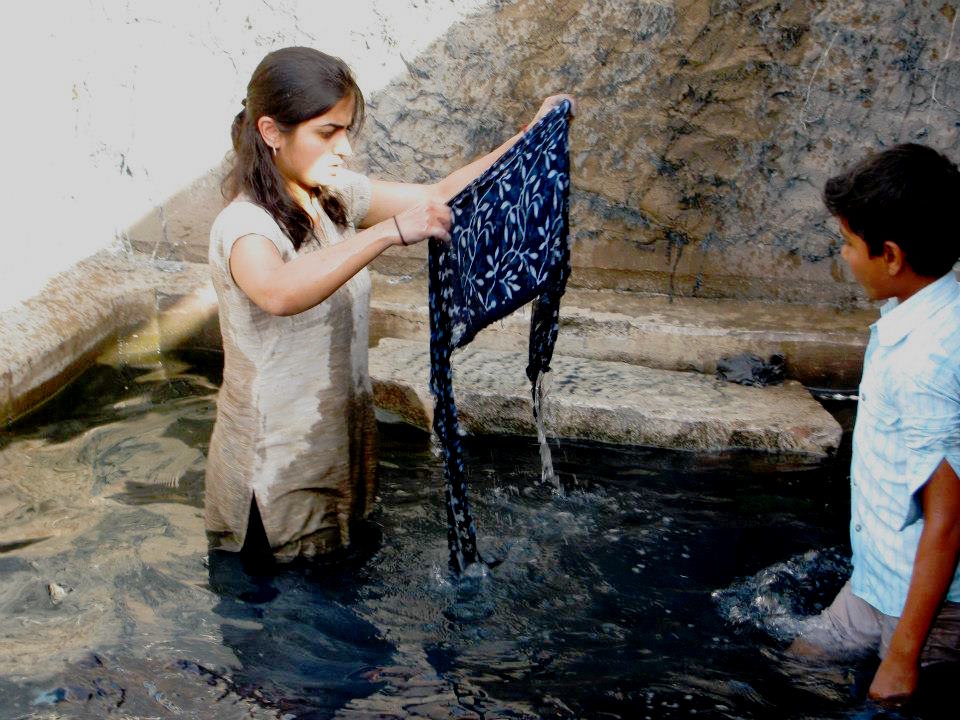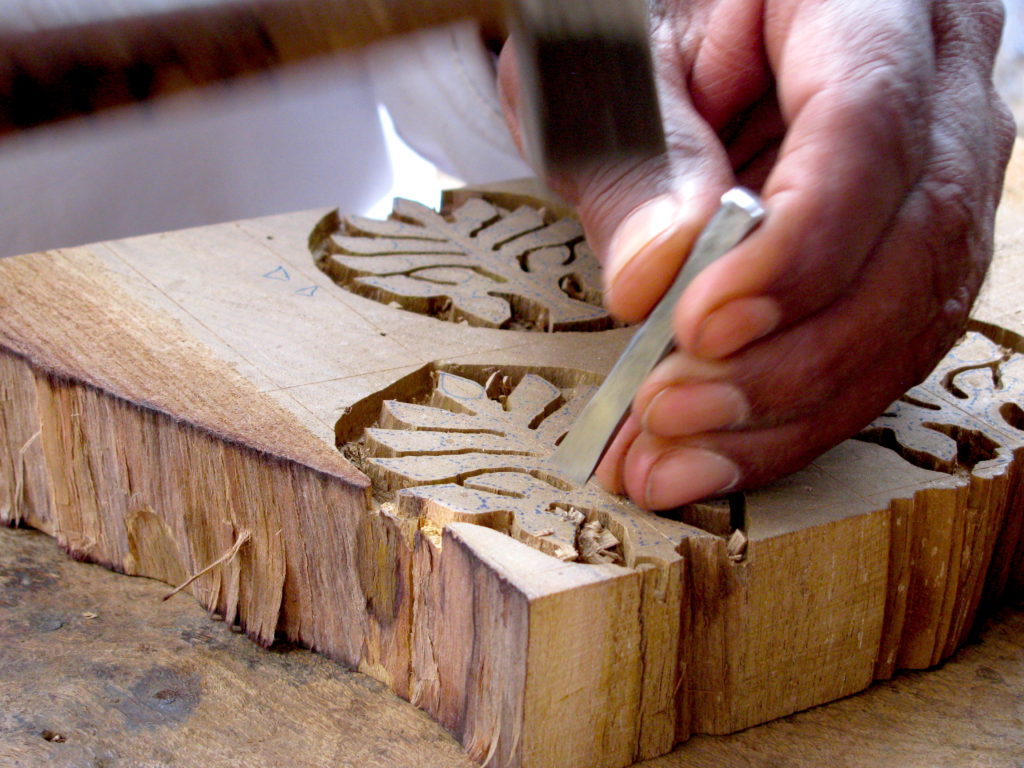Traveling as diplomat children, we’ve been brought up in various cultures, always fascinated by the people, food, and crafts. My sister and I have always had a strong pull towards crafts, especially Indian textiles. We’d always look to bring Indian textiles, jewelry, and crafts into our home. However, the truth is that it was hard to find the true treasures amongst the mass-market goods. Indian craft market was hidden in the villages with very few outlets in the mainstream market except for a few stores.
At the same time, my sister was working to finish her Masters in Textiles, specializing in the ancient technique of Block Printing with natural dyes. The timing was right and with the passion for crafts and a desire to scour and promote craftsmanship. I quit my 11-year software engineering job to set off with my sister on a craft tour of India.
We met many artisans and their families and saw that most of them were connected with their art as a tradition passed down from their ancestors that they also wish to pass down to their children. We also visited a few NGOs that are supporting farmers, artisans, and women. And we loved it all! With such history and tradition in making of a product, it was just not possible for us not to be part of it. And thus came about ichcha, or ‘a wish’, to live and encourage conscious living; conscious of the environment and of the value and life of the products created and sought. 
Ichcha – A Wish to Live
While Ichcha is also about expressing our artistic side, it’s also about encouraging the artisans to find dignity in their art. “Ichcha for Artisans” is an endeavor to encourage the artist within the artisan, giving back 100% profits to the whole community that makes the product possible. All hands are awarded the credit of being part of the end product; the treasure that makes it’s way into the customer’s home.
How we got started…
Back in the days, India, specifically the region of Rajasthan, was filled with multiple tribes who were known by the work they did. One of those groups was the Chhipas or Printers. They used to create the printed clothing for the various tribes in the region. Each design, with various motifs, specified your job or the tribe you belonged to. You could tell whether a person was a farmer or Metal smith by the printed shirt or turban worn. Printed shirts and clothing with unique designs is something that many people have an interest in even across America – you can order custom t-shirts Houston with your own designs on them now online.
The strict separation of the tribes has slowly dissipated but what remains are a few stories by the elder generation still keeping alive the secrets of the motif and the craft of block printing.
To the artisans we work with, the art of block printing has been their tradition and their way of life, for the past four generations. It continues now to the latest generation that strives to keep the family craft alive by finding new markets and ways to keep up with fashion. The only thing that remains true is the beat of the wooden block on the table, the 20 year old and 10 ft deep indigo dye vat, and the passion to continue.
What is Hand Block Printing?
Hand Block Printing with natural or vegetable dyes is an ancient print technique. This art form has been around for years in India, and saw its most glorious years around the 12th century. Today, it is competing against the fast world, but surviving only because to the people who still value them.
Step 1 – BLOCKING. Block means a wooden square piece with an engraved pattern on it. This block is used to print on fabric – and this art is called block printing. The fabric is then commonly called block print fabric.
Step 2 – CARVING. Master block carvers, who have been doing this for many years, carve these blocks. These blocks are carved by a chisel and wooden hammer to form a design pattern.
Step 3 – PRINTING. There are a couple of block printing techniques but the one that we work with is called Dabu. Dabu is a mud resist made by mixing together fuller’s earth, gum and few other natural ingredients. It is mixed into a paste not by hand nor by machine, but by foot, just like grapes were crushed to make wine in the yesteryears!
Once this paste is ready, the fabric is printed with a block using that resist. The areas that are stamped resist any dye that the fabric is dipped in.
Step 4 – DRYING. Sun is crucial to this process. At every step the fabrics have to dry in the open fields under the sun.
Step 5 – DYEING. After the fabric has been printed, it gets dyed. We work with dyes that are made with natural materials found in our surroundings, such as flowers, leaves, spices and various other natural metals. Below is an indigo vat that has been going on for several years.
Step 6 – WASHING & DRYING. After dyeing, the fabrics get washed by hand. More so than not, block printing is a multiple step process where the fabric gets re-printed, re-dyed to bring out the designs we want.
Use Coupon code “goeatgive” to receive 20% off any purchase at www.ichcha.com. Offer expires May 30, 2016.
~ By Rachna Kumar, co-founder of Ichcha, for Go Eat Give.

